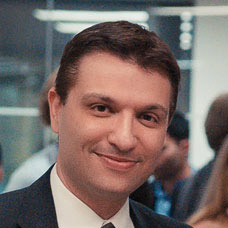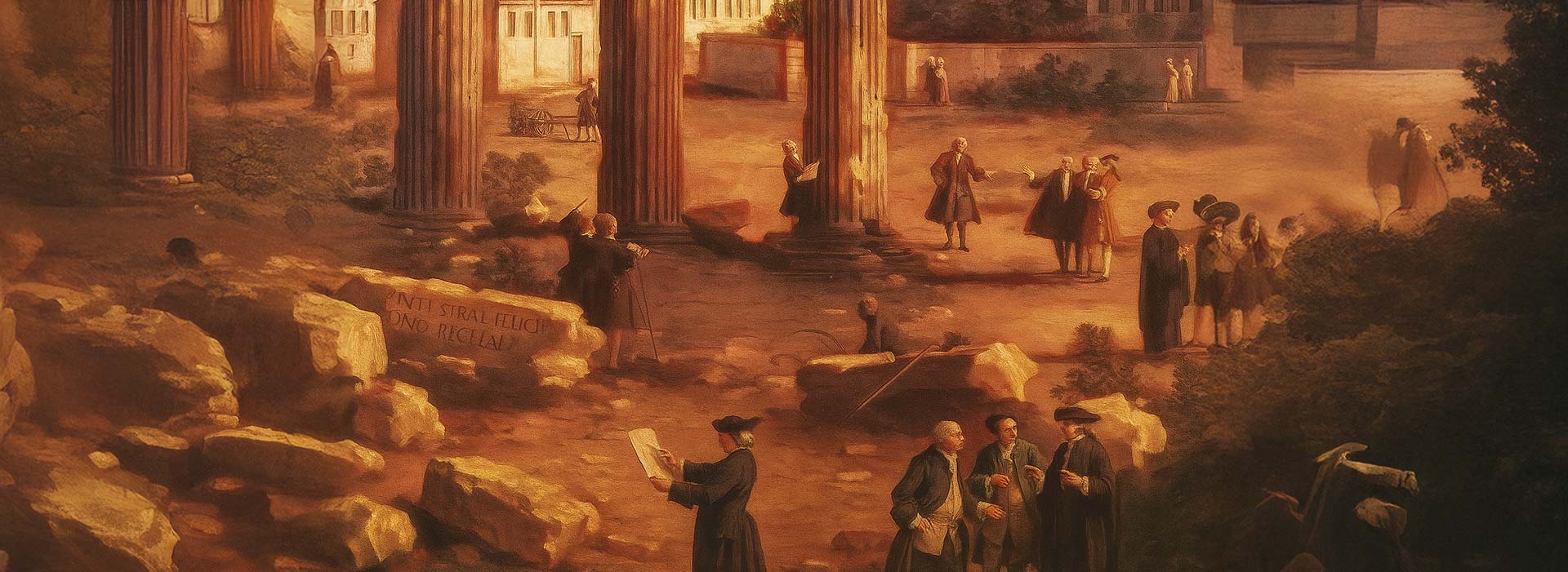| Thank you for Signing Up |


Ford Motor Company launched one of the most successful viral marketing measures in the social web in the automotive industry: The Ford FanAward. And blue media’s founder Dr. William Sen was the initiator.
This campaign was the logical consequence of a thorough social media research and social listening project conducted by Dr. William Sen and Dr. Matthias Fank. In this stunning article, we will go back in time just to understand that the same concepts that worked more than 15 years ago are still applicable today.
Guess which year this is:
Blogs were only at the beginning of their path to become the new mass medium. Social networks like Facebook were still niche applications. The term Web 2.0 was first mentioned by Tim O’Reilly only a couple months ago in a newborn conference. By far not all companies had their own online marketing department. Most people at that time understood “Online Marketing” as online banner advertising only. Above all, Search Engine Optimization (SEO) was seen as a kind of a new innovation. But most of the SEO agencies were struggling since Google’s recent “Florida Update” – which made it impossible for them to build artificial link farms to make their clients visible on the companies were asking themselves: “do we really need online marketing?” and “what’s in it for us?”
Could you guess which year?
Continue reading to find out:
Social Media Reputation Management
Meanwhile, Dr. Matthias Fank from the Technical University of Cologne heard from his business associate Dr. William Sen (blue media) that he ordered his goods exclusively online. The product comparisons in the forums and review portals would make it easier for Dr. Sen to check the quality of the merchandise. He would even configure and order his car over the Internet.
And at a time, credit card misuse on the Internet, fraud in online auctions, and stolen accounts of online banking customers were in the headlines every day. The reputation of the Internet varied between Wonder Media and World Wild West.
We’re talking about the year 2004, and the internet is still in the midst of decisive developments.
Online Communication
Motivated by the rapid development of the Internet, both researchers Dr. Fank and Dr. Sen had to deal with more and more questions like:
- Where do the online consumer get their information from?
- What influence does User Generated Content actually really have?
Above all, they were concerned with the fundamental question:
- What will the future look like when customers make their purchasing decisions mainly via the Internet?
Only a few PR departments of companies at that time saw the Internet as a medium as well as a communication tool for their customers. Targeted online communication was as progressive as it was rare. Among the pioneers in this area was the Ford Motor Company in Germany, struggling on as one of the second largest automotive markets in the world at that time right after the United States. Ford was competing with German brands such as Audi, Mercedes, Porsche, and Volkswagen, and on top of it with Toyota, among other European brands such as Fiat, Peugeot, and Renault.
At the Ford Motor Company in Germany, it was the PR department that had discovered first, those online forums on the Internet where dealing with the brand Ford. However, the scope and importance of these forums were still largely unclear to the department, as market and online research data was missing. For example, the PR department would identify websites of Ford car clubs and list them on Ford’s German website. After all, the PR department didn’t have any opportunities to learn from other automobile companies, and that’s the best they could do at the time to maintain a good relationship with the online community.
It was the right encounter at the right time when Dr. Fank called Ford’s PR Director Dr. Riecke to tell him about his research plan about social media. It was this call that soon after made sure that the first social media monitoring project was launched in the automotive industry in Europe, if not in the world.
And that’s when the internet agency infospeed (now involved and embedded in blue media) came into play. The first professional projects in the field of SEO and social listening were realized there. At this point, however, both the term and the underlying methodology were largely unknown. The campaign was therefore ahead of its time and is perhaps one of the most exemplary SEO and social media campaigns.
Social Media Project Launch
At the start of the project, various interests came together and set themselves the goal of learning together. The Faculty of Information Sciences at the Cologne Technical University, where Dr. Fank and Dr. Sen (blue media) were lecturing, wanted to be able to present verified research results for the first time and to develop models for social media. The challenge was also to process information that was available on the web in such a way, that it could offer companies added value. Ford was looking for innovation models on the Internet and was keen to explore new opportunities in online communication.
The very first time Dr. Fank and Dr. Sen (blue media) wanted to make use of the opportunity to develop their previously designed SEO and social listening technology for the automotive industry. The core research team consisted of both of the researchers as project leaders, as well as other academic staff and students from the university’s faculty.
Identification & Social Media Engagement

The research team initially took a significant step forward in all other processes: the “identification” of a social media engagement.
In order to search for relevant contributions in the social web, it first had to be determined where to search first. For this purpose, several analytical studies were conducted, and the first results were published: over 900 online forums existed in the in the automotive sector.
In order to be able to evaluate the abundance of social media data, the team had to maintain consistent themes through the forums by first subdividing them according to structure, content, appearance, subject (e.g. car models) and technical characteristics. Thus, the topics could be differentiated from forums in classic cars, old and young cars, solo models, etc. The forums were also divided into qualitative, quantitative and technical typologies. The underlying database made it possible to evaluate and identify the most important online forums in the automobile sector.
In the subsequent investigations, it also emerged that almost the entire sum of all automobile discussions took place in just under 1% of the top online forums. The research team noted during the identification phase that the remaining 99% cited either from the other top sources or that their reach was insignificant.
A first presentation took place in the premises of Ford headquarters in Cologne, Germany where the research team presented all the results of the identification phase. The presentation proved the high range and thus the great importance of Internet forums for Ford. The next question then arose as to what significance the brand Ford had in these discussions in the online community.
Social Media Analysis
An important step for social media research was certainly the limitation of indexing to the top forums through social media listening technologies. However, the mass of indexed contributions was not significantly lower. Only 1%of Internet forums on the Internet already had more than 10 million contributions to the topic at this point in time and had an enormous influence on the social web. The challenge was to spot trends in the social networks without stress.
The problem of a large amount of data could be solved by special technical concepts and social listening tools that made targeted queries possible. But the datasets raised another question for the research team: would it really be a good idea just to focus on a few data instead of taking the entire data into consideration?
It was therefore first necessary to determine which topics the PR department was setting their focus on, and which data could actually offer added value to avoid groping in the dark. This approach was quite new since the few previous observations of online content were mostly based on the model of classic newspaper and press clipping services. The volumes in posts may not have much meaning. However, working with Ford has made it clear that capturing and aggregating user-generated content can only be beneficial to a business if it is sought and analyzed right from the start against the background of clearly defined goals, topics, and issues. For this reason, various subject areas were set up for Ford.
The research team also conducted a thematic analysis for the entire automotive sector, comparing all of the relevant issues of all automotive brands, looking at influence in a benchmark, to find particularly relevant, engagement magnets or critical topics. The analysis assisted Ford in making smarter strategic choices.
Social Media Community
In addition, the research team got more interesting insights into the behavior of the community. During the analysis, it was possible to determine how people would behave in the individual forum, and how they were structured from a technical and sociological standpoint.
It was possible to determine where opinion leaders were, how the individual members were connected to each other, and what the behaviorist pattern of the community as a whole looked like. These insights into the behavior of the community made clear the following in particular: in a social listening, it’s not just about capturing and analyzing data, but also the human factor which should not be ignored. Every community in online forums would target different target groups and would have their own Internet subculture. In other words, the community rallies around a common goal. It was clear, that these behavioristic characteristics had to be understood first, and had to find their way into the research results.
Thus, the analysis had several claims to fulfill. On the one hand, the concrete charts offered important market research-specific data. On the other hand, it was only through an intellectual analysis of the community that the prerequisite for later recommendations for a campaign could be created. These results were finally presented to Ford and later carried out to other departments by the PR department. Ford soon realized that the online forums were not, as expected, the activities of isolated tuning fans, but a very serious community that were affecting entire audiences and potential target audiences outside of the internet.
At that time, Ford had understood the power of the online community due to the monitoring and social listening. In addition, an early warning system was established to report critical topics, and trends to Ford at an early stage on an ongoing basis. It helped in shaping how Ford communicated with the social media community going forward. And this way, the first social listening in Germany was established with Ford.
Social Media Campaign
Thanks to the results of the social listening, the team had found copyright infringement cases in numerous forums, as many forum administrators and users would use images and content protected by Ford. At the same time, the PR department also pointed out the Ford brand was not adequately represented in many forums. For example, it came as no surprise that old, distorted or self-made Ford logos were used, or the Ford logo associated with other logos and brands in several forums. In addition, inactive forums, which had been filled with unrestrained content due to their inactivity, proved to be a problem. Through search engines, these could continue to be found by users and gave internet newbies a distorted image of the Ford brand.
Ford now asked the question of appropriate measures. Dr. Sen (blue media) stated that a positive communication approach should be the essential requirement for a successful social media campaign strategy that would impact long-term and new clients. Ford’s Legal and PR Department also agreed, given the first web research results would also reveal that repressive interventions in the community could cause a PR problem.
And that’s why Ford decided to scale by searching for ways to collaborate with the newly discovered community. Consequently, the company tasked both Dr. Sen and Dr. Fank to work out solutions for a social media campaign. The resulting concept developed was approved by Ford in 2005 and eventually was launched as the “Ford FanAward.” – the first social media campaign ever launched at Ford.
Read more about the first Social Media Campaign blue media’s team had launched in 2004 in our next blog:
- What is and how does the Ford FanAward work? (Coming up next)
Tell us more about your business and we’ll tell you how we can help!
GET IN TOUCH!| Thank you for Signing Up |



 by
by 

